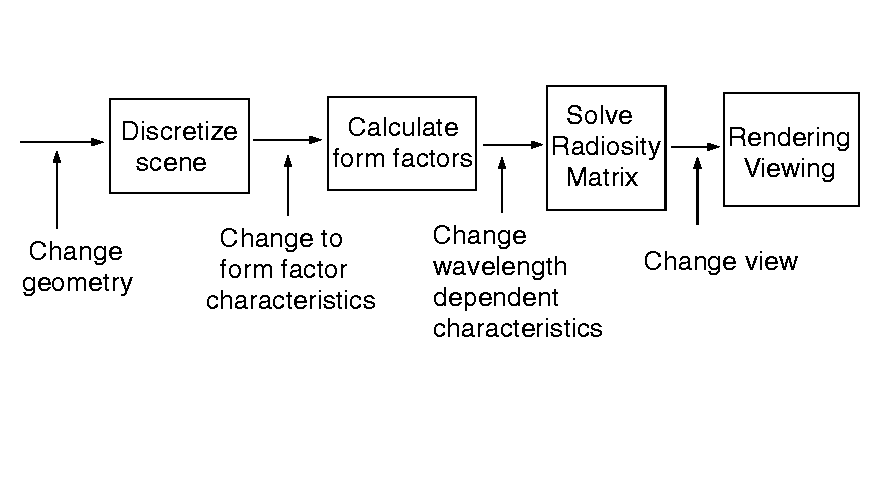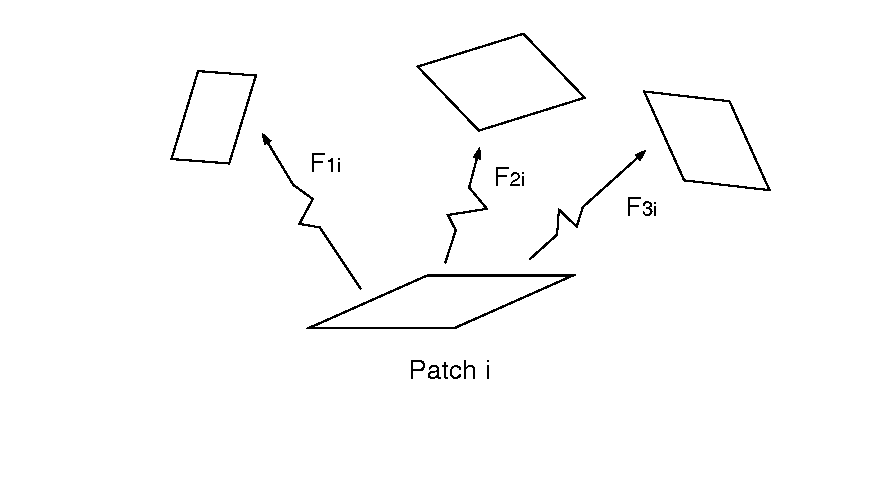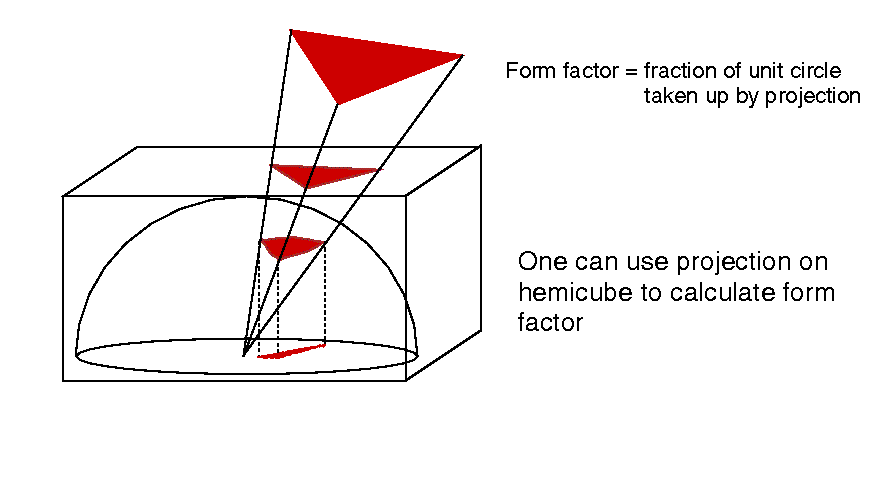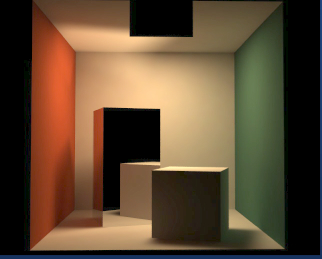
Computational Bottleneck: form factor calculations, O(n2)
Discretization resolution determines accuracy of solution
- need finer resulotion where radiosity gradiant is high
To increase accuracy, use
-- now have  form factors
form factors
Calculating element radiosities

for an element, only look at other patches, not elements.
Resulting operations needed:
- Calculate patch form factors.
- Calculate patch-patch coarse solution.
- Subdivide patches into elements based on gradiant and
calculate element-patch F.F.
- Calculate element radiosities.
Progressive Refinement
- Progressively increase the realism.
- In traditional ``gathering'' method, a solution for one
row produces the radiosity for a single patch

Estimate of radiosity of patch i based on current value of all other
patches.
==> gathering illumination.
- shooting method --
At each step, radiosity from a patch is shot onto all
other patches ==> entire image gets better at each
step.

For all j:

where  .
.
Shooting Algorithm
Repeat
For each Patch i
for first iteration calculate F.F.  .
.
For each Patch j ( )
)
{



}

Until convergence
Improvements:
- Order patches by
 , so shoot brightest patches first.
, so shoot brightest patches first.
- Add an ambient approximation
- to keep illumination of scene nearly constant
- descrease as solution gets more accurate

where  is the overall reflection factor.
is the overall reflection factor.
Form Factor Issues
- high cost to compute -- nontrivial
- Fij also must look at all other patches
(shadowing/blocking).
hemicube solves 1 & 2 together.

Form Factor = fraction of unit circle taken up by projection.
- Gathering algorithm requires storage and calculation of
form factor matrix
 large storage for matrix.
large storage for matrix.

 Cornell Box Radiosity
simulation
Cornell Box Radiosity
simulation





